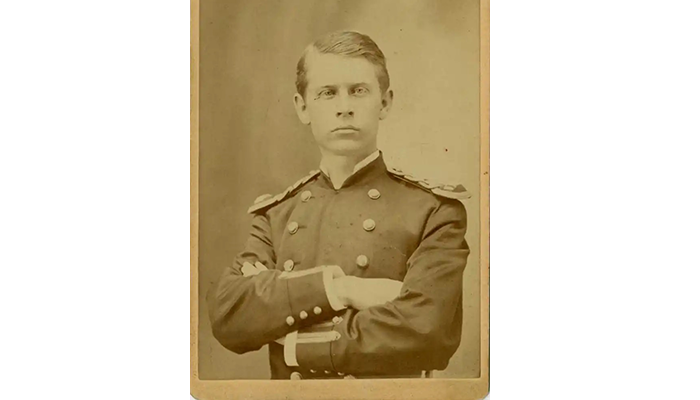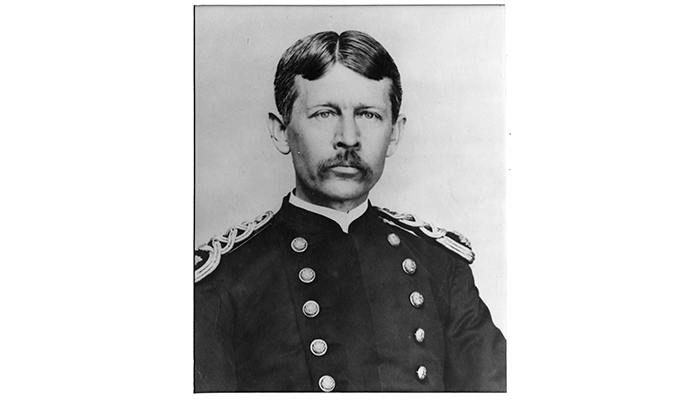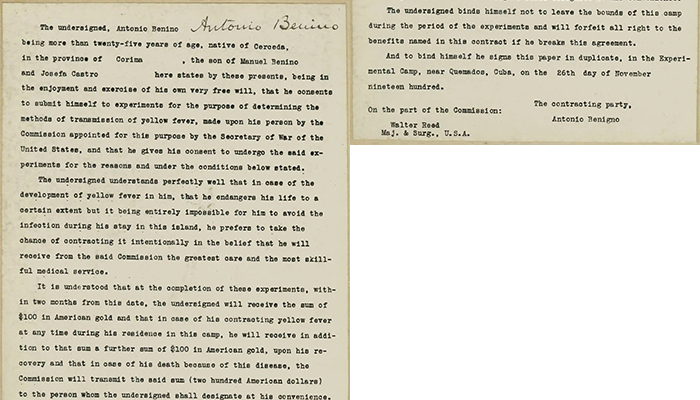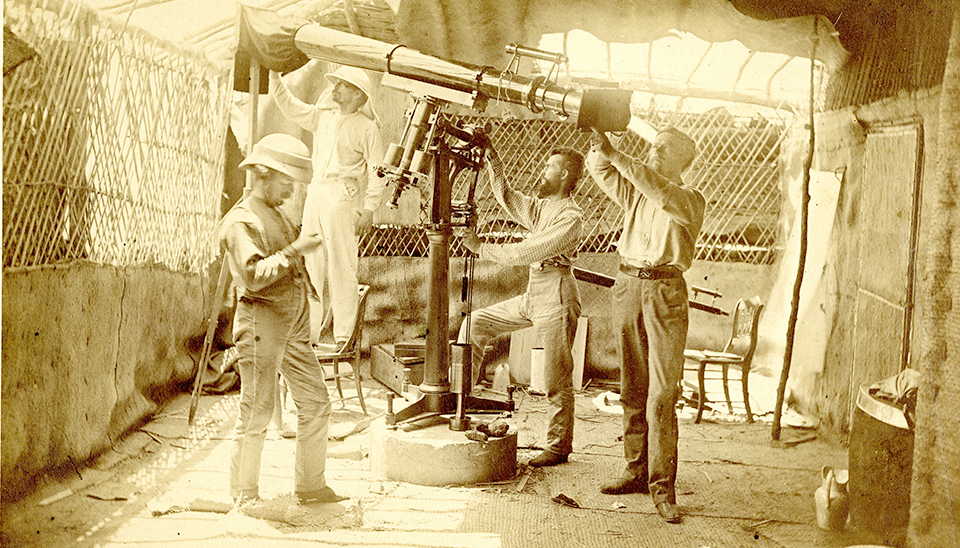Dr. Walter Reed (1851-1902) would have never believed that his name became one of the most famous and well-known names in American medicine. Acknowledging that medical education in his day was pedestrian compared to today, it is still remarkable that he graduated from the University of Virginia School of Medicine at not yet 18 years old; he remains the youngest of all time. As UVA had no hospital at the time, he went to New York where he obtained a second medical degree from Bellevue Hospital Medical School. After working in New York City for several years he sought a more stable income so he could marry Emilie Lawrence of North Carolina. Reed joined the U.S. Army, which would provide him opportunities leading to his remarkable accomplishments, leaving indelible marks on the country and the world.
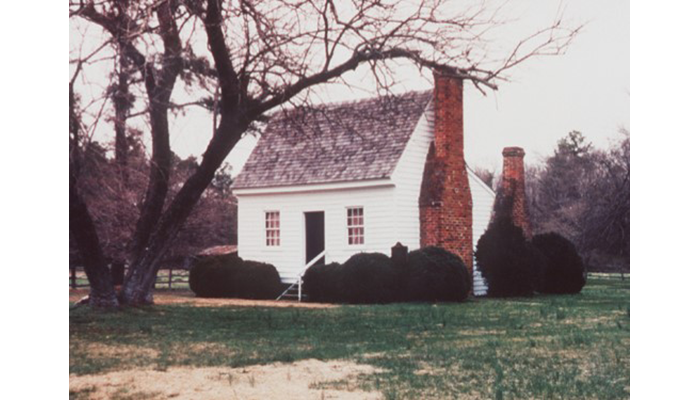
Walter Reed was born in this small cottage near Gloucester, Virginia on Sept. 13, 1851. At that time, the cottage was the temporary parsonage of Bellamy Methodist Church and was occupied by the Reed family. The cottage was restored in the late 1920s and is maintained today by the Fairfield Foundation. It is open to the public twice a year, once during Historic Garden Week in April and again in September to celebrate Reed's birthday. (Photo by John Pierce)
Reed's early Army career followed the same track as most young military physicians, with numerous assignments at different locations. His position required multiple family moves back and forth across the country, including the mostly unsettled western frontier.
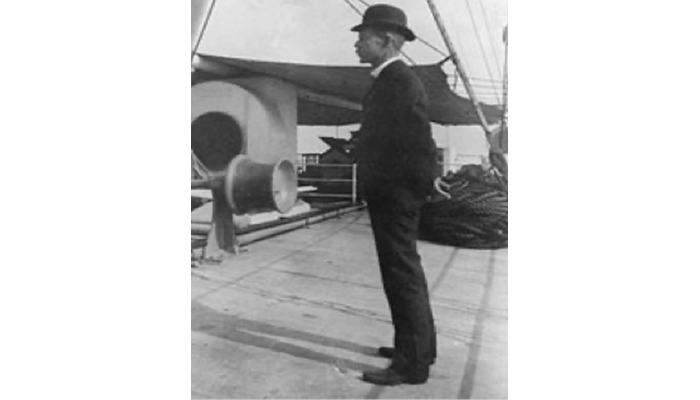
In 1899, Walter Reed sailed to Cuba five or six times on Army business. It is unknown during which trip this photo was taken. Reed was subject to sea sickness, so probably spent as much time as he could on deck as it was usually helpful to be out in the fresh air. On one of these trips, he wrote to his wife that he had been "feeding the fish." (Image courtesy of John Pierce)
Taking full advantage of the opportunities presented to him during his assignments in the east, Reed seized the chance to do extra work and studied at Johns Hopkins University, a hallmark of his career. Later, in the new medical school, he worked under legendary leaders in American medicine who would become his mentors, notably William Welch and Howard Kelly.
In 1893 Reed was brought back to Washington, D.C. to be dual positioned as curator of the Army Medical Museum (forerunner of the National Museum of Health and Medicine) established in 1862 during the Civil War, and faculty at the new Army Medical School, (forerunner of Walter Reed Army Institute of Research) in part because it was cheaper to move him rather than another physician who lived farther away. He made a name for himself and became a trusted troubleshooter for his Surgeon General, George Miller Sternberg.
When many young volunteers died of disease in their recruitment and training camps in the U.S. before they were deployed to fight in the Spanish-American War, Reed was chosen to lead a board of officers to investigate the scandal. Reed, along with Maj. Victor Vaughn and Maj. Edward Shakespeare, traveled to all of the stricken camps to study, in great detail, the tragic events. Their findings placed responsibility for the health of the troops directly on their military commander, implicated filth and flies in transmission of typhoid fever, and further developed the concept of asymptomatic carriers.

A lesser-known Dean Cornwell painting picturing the event of Walter Reed and other board members visiting Dr. Carlos Finlay at his office in Havana, Cuba. Finlay's theory was that specific mosquitoes transmitted yellow fever, but he had been unable to satisfactorily prove it. He gave the U.S. Army Yellow Fever Board eggs of his suspected mosquito to experiment. The man sitting in the image is Claudio Delgado, Finlay's assistant. (Image courtesy of John Pierce)
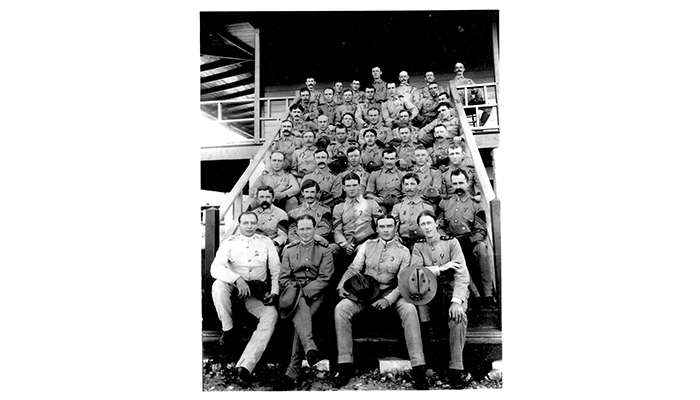
Medical officers and hospital corpsmen at Columbia Barracks in Cuba, c. 1899. Several of these men pictured volunteered to take part in the yellow fever experiments. (Image courtesy of John Pierce)
Reed's outstanding work on typhoid earned him more work as head of the U.S. Army Yellow Fever Board even before the typhoid report was completed. Off to Cuba in June 1900, Reed would lead numerous experiments with human subjects that proved a common domestic mosquito transmitted yellow fever from human to human, that household objects (clothing, bedding, etc., called fomites) did not transmit the disease, that the yellow fever germ was smaller than any known bacteria (the first known viral disease in humans), and could be transmitted via injection of blood from the sick to the well. They were also the first research group to require signed informed consent from their human subjects.
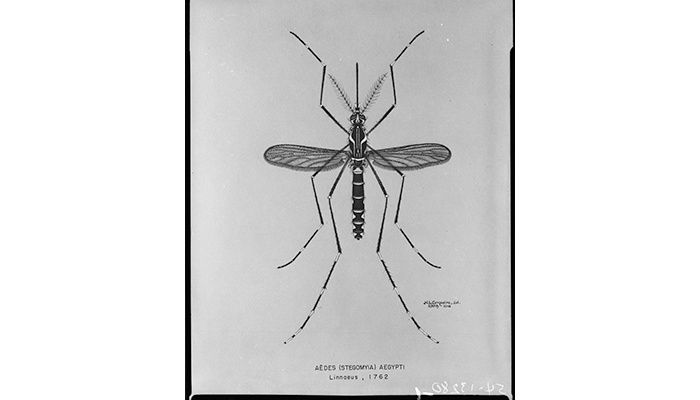
Reed returned to the States to some acclaim but died at age 52 before seeing the incredible effects of the application of his research; i.e., the tremendous benefits of their typhoid report, freeing the tropics from the scourge of yellow fever, the ultimate completion of the Panama Canal, the savings of uncounted lives and money, the probable surgeon-generalcy of the Army, a possible Nobel Prize, and more. All of this recognition would have been transitory, but the naming of the Army's new hospital in Washington, D.C. would lead to immortality of his name. The Walter Reed General Hospital would grow over the years to become the world famous Walter Reed National Military Medical Center, hospital to privates and sergeants, lieutenants and generals, as well as Presidents of the United States, and other national leaders from around the world. He simply would not have believed it.
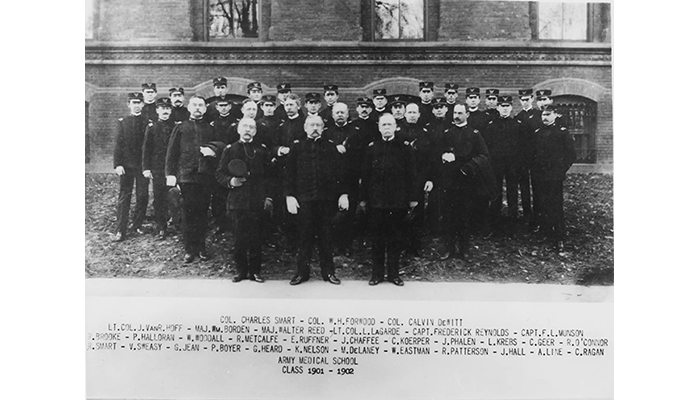
Army Medical School, Class of 1901-1902, including Major Walter Reed in second row. This is the last known photo of Walter Reed. (WRAMC DPW 09-5124-1)
Dr. John Pierce is an invited contributor and Walter Reed scholar.
Resources
Philip S. Hench Walter Reed Yellow Fever Collection, University of Virginia
Pierce, John R & James V Writer. Yellow Jack: How Yellow Fever Ravaged America and Walter Reed Discovered Its Deadly Secrets. Hoboken, New Jersey: John Wiley & Sons Inc, 2005.
Relevant Links:
Advances in Military Medicine Exhibit: The Legacy of Walter Reed
NMHM Curators & Directors: U.S. Army Maj. Walter Reed



